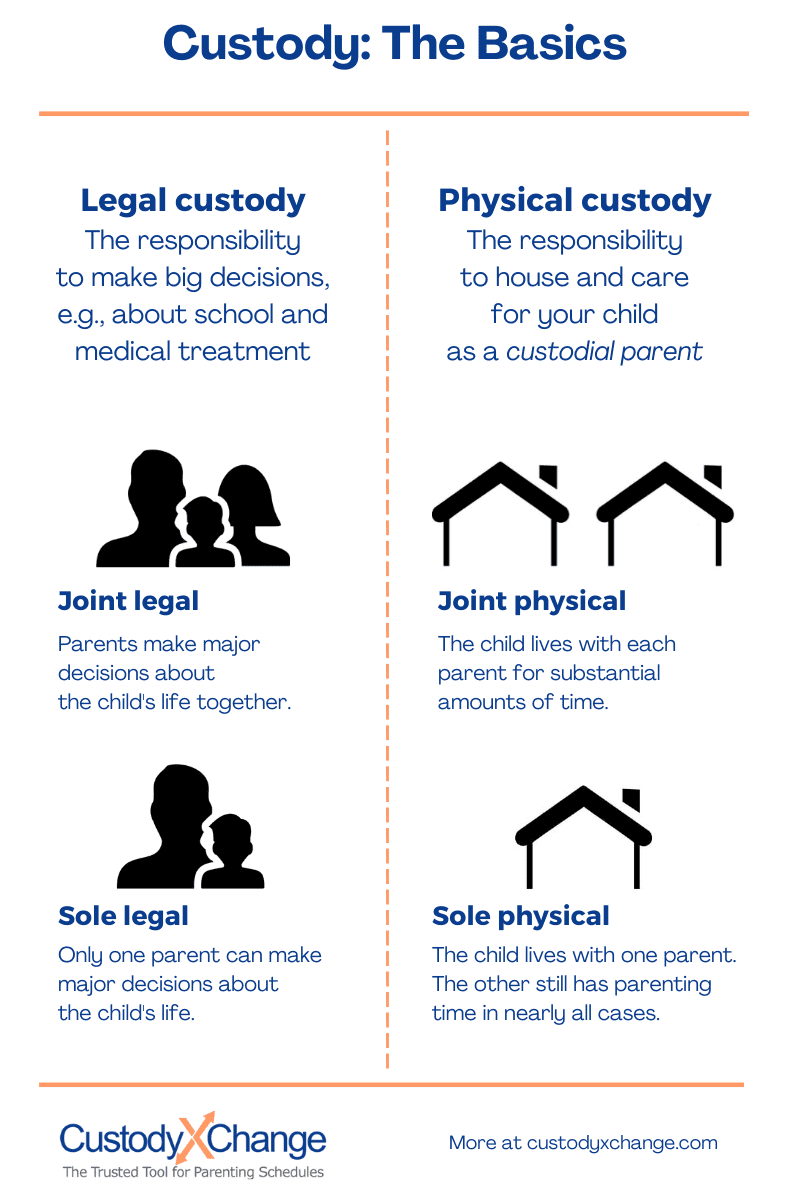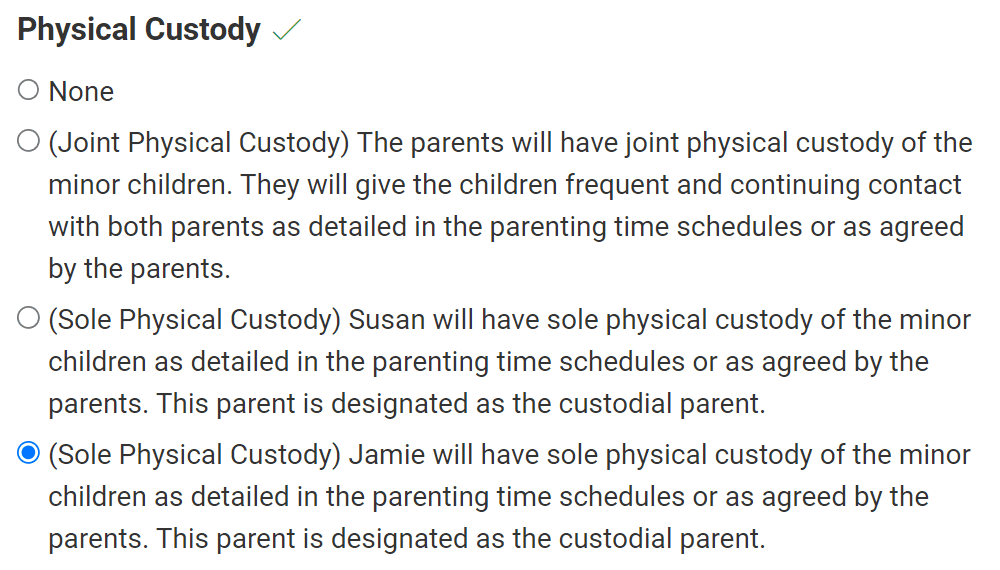Sole Physical Custody
Child custody includes both physical and legal custody. Physical custody encompasses where the child lives and who cares for them.
Sole physical custody (also called sole residential custody, sole parenting time, etc.) means that your child lives with one parent, called the custodial or residential parent. In almost all cases, the other parent — called the noncustodial or nonresidential parent — gets regular visits with the child.
The alternative to sole physical custody is joint physical custody.

You can customize this to fit your situation with Custody X Change.
When to have sole custody arrangements
Parents should have a sole custody arrangement when:
- You and the other parent agree that sole custody is in your child's best interest.
- A parent travels extensively for work or their work schedule makes it difficult to have the children live with them.
- Your child needs a primary residence for an age appropriate custody schedule.
- Parents live far away from each other and have a long distance custody schedule.
- A parent has problems with substance abuse or is mentally unstable.
- A parent has a history of abuse or neglect towards the child, or a parent has been absent from a child's life. Supervised visitation may be necessary in these circumstances.

You can customize this to fit your situation with Custody X Change.
Examples of sole custody visitation schedules
If you have a sole physical custody arrangement you need to make a visitation schedule that shows when your child will spend time with the noncustodial parent.
Some common sole custody visitation schedules include:
- The every weekend schedule where the child spends every weekend with the noncustodial parent.
- The every 3rd week schedule where the child spends every third week with the noncustodial parent.
- The alternating weekends schedule where the child spends every other weekend with the noncustodial parent.
- The 1st, 3rd, and 5th weekends schedule where the weekends are assigned to the noncustodial parent.
- The 2nd, 4th, and 5th weekends schedule where the weekends are assigned to the noncustodial parent.
You can add midweek visits or overnights to any of these schedules to modify them to fit your needs.
State preferences for joint custody
Many states have laws that prefer joint custody over sole custody. Courts in these states will order joint custody as the default unless a parent can prove that sole custody is in the best interest of the child.
Remember that joint custody doesn't mean that both parents get equal parenting time with the child. If you want sole custody because you want your child to live primarily with you, you may still be able to have the living arrangements you want with joint custody. Your state custody guidelines can help you know how to proceed.
You can still seek sole custody in a state that prefers joint custody. If you have clear and compelling evidence that your child will do better with sole custody, the court will likely grant it.
Pros and cons of sole physical custody
Pros of sole physical custody include:
- The child has a home base that is usually the same home the child has been living in.
- The child can keep a routine and schedule that is similar to before the parents' separation.
- A schedule can be set up that is stable and predictable so everyone always knows what's going on.
- The noncustodial parent can be granted liberal visitation with the child.
- Less exchanges can be easier for parents who live far away from each other or who have very busy work schedules.
Cons of sole physical custody include:
- The children don't spend time living with both parents.
- The noncustodial parent may not get enough time with the child and their relationship may suffer.
- If a parent thinks the custody schedule is unfair, the parents may spend a lot of time in court fighting over the custody situation.
Designating sole physical custody in your parenting plan
Creating a parenting plan can feel overwhelming.
Use technology to take guesswork out of the equation. The Custody X Change app walks you through each step of creating a comprehensive parenting plan.
Designating sole physical custody in your plan is easy. In the app, click the "parenting plan" tab. More than 25 categories of parenting provisions will appear.

You can customize this to fit your situation with Custody X Change.
Click the first category: physical custody. Then, select the button that gives sole physical custody to the right parent.
Now you're on your way to a professional-quality document for managing your child's custody.

You can customize this to fit your situation with Custody X Change.
